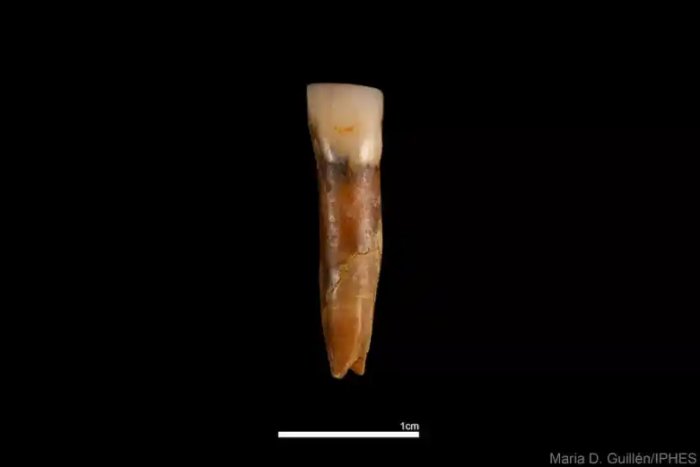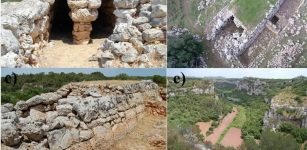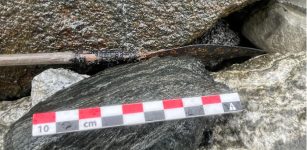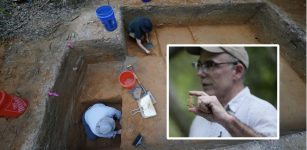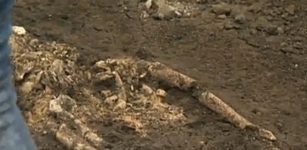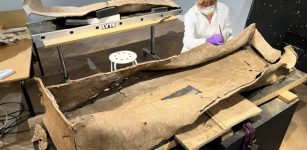850,000-Year-Old Remains Of Homo Antecessor Found At Atapuerca, Spain
Jan Bartek - AncientPages.com - The archaeological site of Atapuerca, situated in northern Spain's Burgos province, is a significant location for studying early human history. Recent excavations have yielded new Homo antecessor remains, an extinct archaic human species. These bones, discovered in Gran Dolina's TD6 unit within the Sierra de Atapuerca, are approximately 850,000 years old.
The extensive excavation work in unit TD6 of Gran Dolina has provided new human remains of Homo antecessor, coinciding with the 30th anniversary of the discovery of this new species. Credit: Maria D. Guillén / IPHES-CERCA
The find represents a crucial advancement in archaeological and anthropological research, potentially ushering in a new era of human evolution studies.
Homo antecessor, which translates to "pioneer man" in Latin, inhabited Spain between 1.2 and 0.8 million years ago during the Early Pleistocene. This species may have been among the first to colonize Western Europe, hence its name. The initial fossils were unearthed in the Gran Dolina cave in 1994, with the species being formally described in 1997.
Reconstruction of Homo antecessor skull at Museu d'Arqueologia de Catalunya (Barcelona, Spain). Credit: Xvazquez - Public Domain
Initially, H. antecessor was proposed as the last common ancestor of modern humans and Neanderthals, replacing the previously accepted H. heidelbergensis in this role. However, current interpretations suggest that H. antecessor was likely an offshoot of the modern human lineage, branching off just before the split between modern humans and Neanderthals.
These ongoing discoveries and evolving interpretations highlight the dynamic nature of paleoanthropology and the continuous refinement of our understanding of human evolution.
The archaeological excavation ran from June 18 to July 24, involving over 300 international researchers. IPHES-CERCA contributed significantly with about 120 researchers, technicians, faculty, and students from URV's Quaternary Archaeology and Human Evolution master's program. This diverse team coordinated and participated in five main sites, documenting and analyzing discoveries with scientific rigor.
The project co-directors, Dr. Eudald Carbonell, Dr. José María Bermúdez de Castro, and Dr. Juan Luis Arsuaga, have described this excavation campaign as one of the most important in the project’s history: Undoubtedly, the star discovery of this year has been the new human remains of Homo antecessor recovered in the TD6 unit of Gran Dolina, approximately 850,000 years old.
Incisive of Homo antecessor recovered from TD6 unit, Gran Dolina. Credit: Maria D. Guillén / IPHES-CERCA
Thirty years ago, an initial survey here revealed the species' first remains, along with lithic artifacts and animal fossils. The research team now confirms the TD6 unit is suitable for further study. Dr. Marina Mosquera, IPHES-CERCA Director, is pleased that TD6 is well-preserved over 40 square meters. Hyena coprolites indicate a unique paleobiological context. The excavation has yielded Homo antecessor skull fragments, mandible, vertebrae, and an incisor, plus a small wrist bone. The tooth suggests a previously undocumented 25-year-old female adult.
The Sima del Elefante excavation has also produced important findings. At level TE7, researchers discovered human remains ("Pink") in 2022 and lithic tools in 2023. Recent finds of a quartz flake and a cut-marked herbivore rib offer insights into early hominin life 1. 2-1. 4 million years ago. At the Galería site, studies of Subunit GIIb (300, 000 years old) revealed 500 faunal remains and over 30 lithic tools. This supports the theory that pre-Neanderthals used the site for opportunistic hunting, making it a key reference in Sierra de Atapuerca.
See also: More Archaeology News
Recent excavations at Cueva Fantasma have revealed Neanderthal tools and modified animal remains in the entrance, while the Sala Fantasma contained evidence of ancient hyena activity from 50, 000 years ago.
Hyena jaw recovered from Cueva Fantasma. Credit: Maria D. Guillén / IPHES-CERCA
El Mirador cave yielded rock art and Neolithic artifacts, including a painted stone block and solar-motif ceramics, indicating agrarian communities from 7, 000 years ago. Sediment processing from the Arlanzón River uncovered microfaunal remains.
These findings reinforce Sierra de Atapuerca's significance in human history and evolution.
Written by Jan Bartek - AncientPages.com Staff Writer



